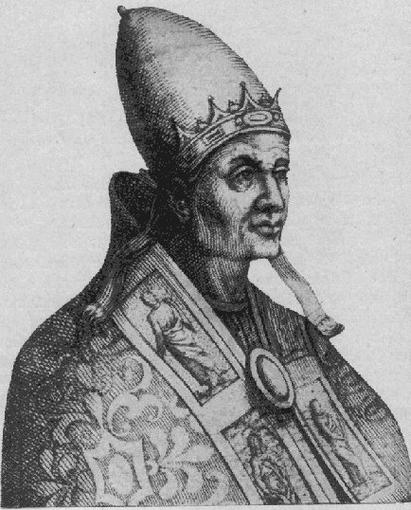As part of my series of articles on Christian Gnosis and Mystical Christianity, I will continue to focus on the Catholic Church’s gnostic teachings or more appropriately, what they may call, “authentic gnosis” practiced by “true gnostics”.
This is quote by Pope Benedict XVI taken from a 2007 sermon on Clement of Alexandria given at Saint Peter’s Square.
Benedict says of Clement; “He was a disciple of Pantaenus until he succeeded him as head of the catechetical school. Many sources testify that he was ordained a priest. During the persecution of 202-203, he fled from Alexandria, seeking refuge in Caesarea, Cappadocia, where he died in about 215.
Of his most important works three are extant: the Protrepticus, the Paedagogus and the Stromata. Although it does not seem that this was the author’s original intention, it is a fact that these writings constitute a true trilogy, destined to effectively accompany the Christian’s spiritual growth.
The Protrepticus, as the word itself suggests, is an “exhortation” addressed to those who are starting out and seek the path of faith. Better still, the Protrepticus coincides with a Person: the Son of God, Jesus Christ, who makes himself the exhorter of men and women so that they will set out towards the Truth with determination.
Jesus Christ himself becomes the Paedagogus, that is, the “tutor” of those who, by virtue of Baptism, have henceforth become children of God.
Lastly, Jesus Christ himself is also the Didascalos, the “Master” who presents the most profound teachings. These are gathered in Clement’s third work, the Stromata, a Greek term which means “tapestries”: indeed, they are a random composition of different topics, direct fruits of Clement’s customary teaching.
Overall, Clement’s catecheses accompanied the catechumens and the baptized step by step on their way, so that with the two “wings” of faith and reason they might reach intimate knowledge of the Truth which is Jesus Christ, the Word of God. Only this knowledge of the Person who is truth is the “true gnosis, a Greek term which means “knowledge”, “understanding”. It is the edifice built by reason under the impetus of a supernatural principle.
Faith itself builds true philosophy, that is, true conversion on the journey to take through life. Hence, authentic “gnosis” is a development of faith inspired by Jesus Christ in the soul united with him. Clement then distinguishes two steps in Christian life.
The first step: believing Christians who live the faith in an ordinary way, yet are always open to the horizons of holiness. Then the second step: “gnostics”, that is, those who lead a life of spiritual perfection.
In any case, Christians must start from the common basis of faith through a process of seeking; they must allow themselves to be guided by Christ and thus attain knowledge of the Truth and of truth that forms the content of faith.
This knowledge, Clement says, becomes a living reality in the soul: it is not only a theory, it is a life force, a transforming union of love. Knowledge of Christ is not only thought, but is love which opens the eyes, transforms the person and creates communion with the Logos, with the Divine Word who is truth and life. In this communion, which is perfect knowledge and love, the perfect Christian attains contemplation, unification with God.
Finally, Clement espouses the doctrine which claims that man’s ultimate end is to liken himself to God. We were created in the image and likeness of God, but this is also a challenge, a journey: indeed, life’s purpose, its ultimate destination, is truly to become similar to God. This is possible through the co-naturality with him which man received at the moment of creation, which is why, already in himself – already in himself – he is an image of God. This co-naturality makes it possible to know the divine realities to which man adheres, first of all out of faith, and through a lived faith the practice of virtue can grow until one contemplates God.
On the path to perfection, Clement thus attaches as much importance to the moral requisite as he gives to the intellectual. The two go hand in hand, for it is impossible to know without living and impossible to live without knowing.
Becoming likened to God and contemplating him cannot be attained with purely rational knowledge: to this end, a life in accordance with the Logos is necessary, a life in accordance with truth. Consequently, good works must accompany intellectual knowledge just as the shadow follows the body.
Two virtues above all embellish the soul of the “true gnostic”. The first is freedom from the passions (apátheia); the other is love, the true passion that assures intimate union with God. Love gives perfect peace and enables “the true gnostic” to face the greatest sacrifices, even the supreme sacrifice in following Christ, and makes him climb from step to step to the peak of virtue.”
Read more gnosis from the Catholic Church

Moe is the founder of GnosticWarrior.com. He is a father, husband, author, martial arts black belt, and an expert in Gnosticism, the occult, and esotericism.


![When the nation of the Picts received the faith of Christ [565 A.D.] | Book 3 | Chapter 4 When the nation of the Picts received the faith of Christ [565 A.D.] | Book 3 | Chapter 4](https://www.gnosticwarrior.com/wp-content/plugins/contextual-related-posts/default.png)
